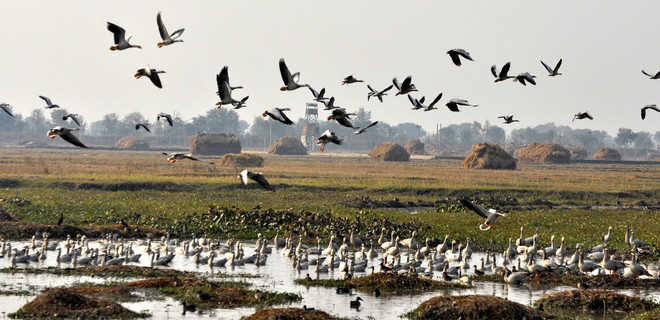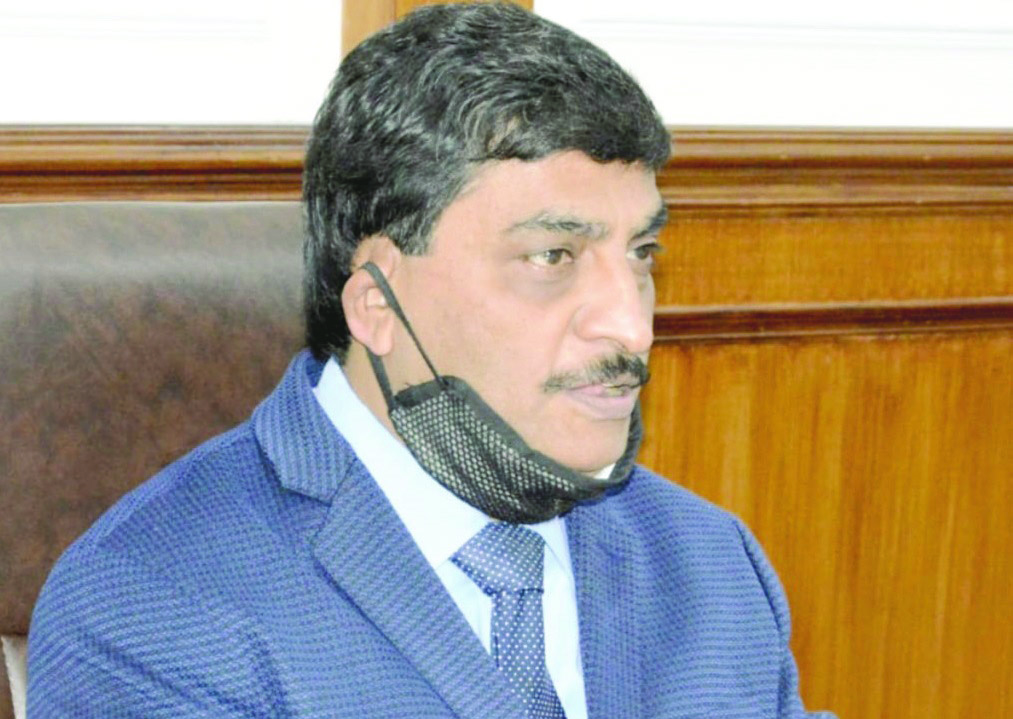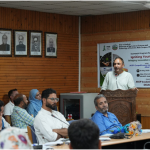Srinagar, Dec 21: Officials from the Jammu and Kashmir Wildlife Department said onFriday that they expect around 10 lakh winged visitors to Kashmir this season, adding that 3-4 lakh birds have already arrived in various areas of the Valley.
Wildlife warden, wetlands, Ifshan Dewan told Rising Kashmir that they were expecting over 10 lakh winged visitors during this winter season in Kashmir and 3-4 lakh birds have already arrived in different wetlands of the Valley.
“As per rough figures approximately 4-5 lakh migratory birds visited so far Kashmir. Normally these migratory birds visit Kashmir from October 15 and remain till the end of 15th April every year.
Dewan said this year, over 3 lakhs migratory birds were recorded in Hokersar and Hygam wetlands. 50K to 60K in Dal Lake and Pampore wetlands.She said both Mirgund and Hokerar wetlands witnessed more migratory birds as compared to past years.
“With decrease in temperatures, most of the migratory birds are arriving in Kashmir and it will continue for some more time,” she said.
About decline in migratory birds, Ifshan said there is no decline in bird arrival and more birds will come in the upcoming days. There is not much variation of birds as compared to previous years,” she said.
“The census of migratory birds is being conducted in February by independent agencies including persons from Universities, NGOs and government departments,” he said.
Each year migratory birds from Siberia, China, central Asia, Eastern Europe, and various other inclement terrains visit Kashmir. Their arrival in the Valley occurs during September and October and then they return around February for the reverse migration.
Some of migratory birds include Mallard, Gadwall, Common Teal, Northern Shoveller, Pintail, Grey Leg Geese, Eurasian Wigeon, Ruddy Shelduck, Common Pochard, and Red Crested Pochard.
As per Valley based experts that during the recent decades the numbers of visiting birds have declined due to a combination of climate change and urban development.They blame construction around wetlands; accumulated trash and the changing Himalayan climate is robbing the birds of their traditional watering holes and nesting areas.
Dr. Irfan Rashid, who is Assistant Professor at Department of Geoinformatics, University of Kashmir, told Rising Kashmir that J&K does not have any guiding wetland conservation policy.
“Presently J&K do not have any policy document regarding wetland conservation. Although there are laws like Water Act 1974, Environmental Protection Act 1986, etc. I don’t think they are being implemented in letter and spirit for conservation of wetlands,” he said.
Dr. Rashid who has vast experience of having researched on the wetlands said that the main reason behind the drying of Hokersar wetland is unplanned dredging.“The wetland managers failed to adopt a scientifically robust mechanism as to how and where to dredge Hokersar,” he said.
He said the absence of breeding grounds due to the lack of a good amount of water will affect the habitat of migratory birds. From 1800 hectares, Hokersar has remained at 1300 hectares over the past 3 decades.
Dr. Rashid stressed that the knowledge generated from the Universities and Research Institutes should find space in policy circles. This could be achieved by having a strong science-policy interface that takes inputs from all the stakeholders including lake and wetland managers, academia, civil society, etc, he said.
In Kashmir, there are around nine wetlands in Kashmir including Hokersar, Hygam, Pampore, and Bandipora where these birds rest during the winter.








